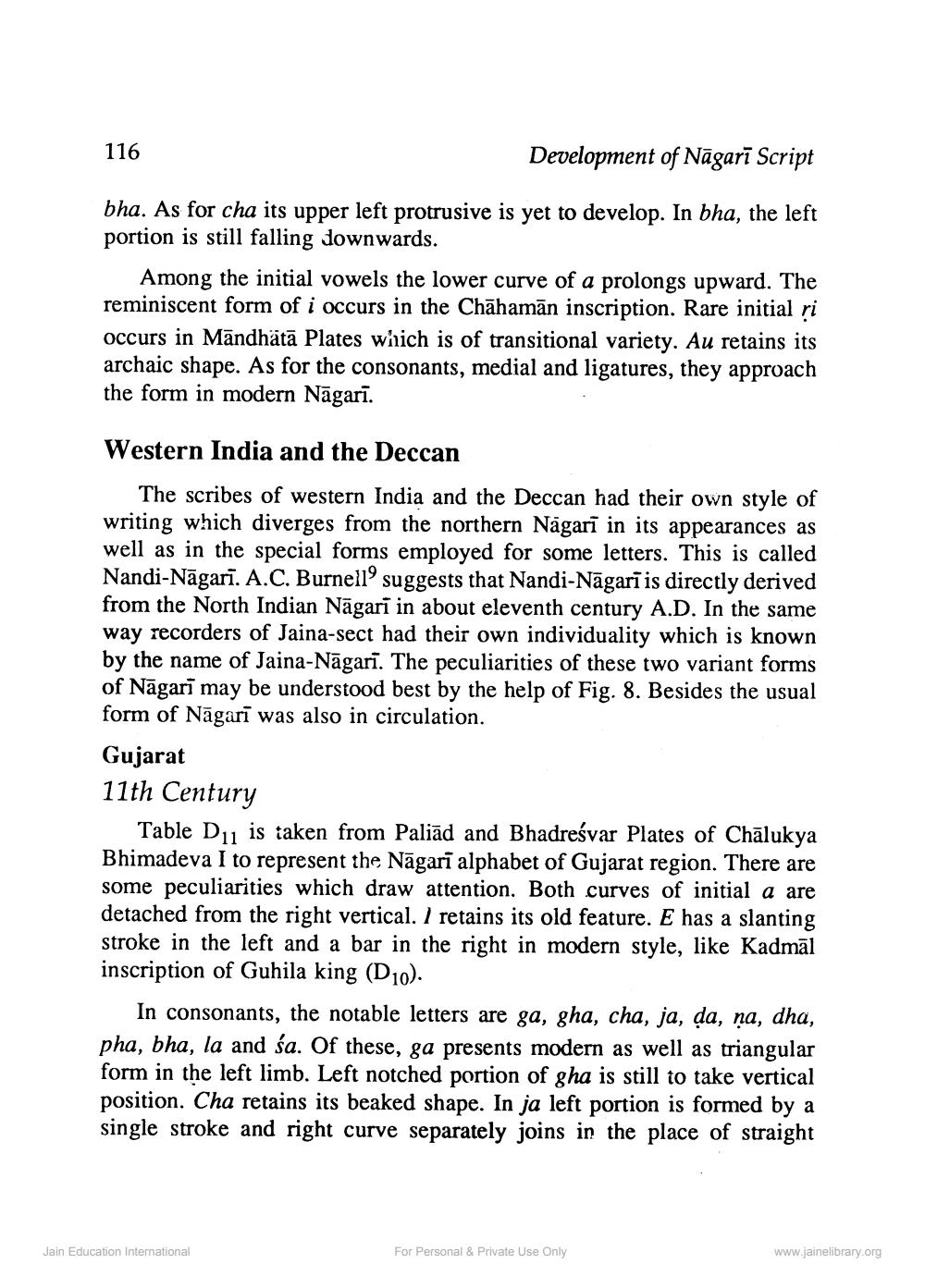________________
116
Development of Nāgarī Script
bha. As for cha its upper left protrusive is yet to develop. In bha, the left portion is still falling downwards.
Among the initial vowels the lower curve of a prolongs upward. The reminiscent form of i occurs in the Chāhamān inscription. Rare initial și occurs in Māndhätā Plates which is of transitional variety. Au retains its archaic shape. As for the consonants, medial and ligatures, they approach the form in modern Nāgarī.
Western India and the Deccan
The scribes of western India and the Deccan had their own style of writing which diverges from the northern Nägarī in its appearances as well as in the special forms employed for some letters. This is called Nandi-Nāgarī. A.C. Burnello suggests that Nandi-Nāgarī is directly derived from the North Indian Nāgari in about eleventh century A.D. In the same way recorders of Jaina-sect had their own individuality which is known by the name of Jaina-Nāgari. The peculiarities of these two variant forms of Nāgarī may be understood best by the help of Fig. 8. Besides the usual form of Nāgari was also in circulation.
Gujarat 11th Century
Table Du is taken from Paliād and Bhadreśvar Plates of Chālukya Bhimadeva I to represent the Nāgari alphabet of Gujarat region. There are some peculiarities which draw attention. Both curves of initial a are detached from the right vertical. I retains its old feature. E has a slanting stroke in the left and a bar in the right in modern style, like Kadmāl inscription of Guhila king (D10).
In consonants, the notable letters are ga, gha, cha, ja, da, ņa, dha, pha, bha, la and śa. Of these, ga presents modern as well as triangular form in the left limb. Left notched portion of gha is still to take vertical position. Cha retains its beaked shape. In ja left portion is formed by a single stroke and right curve separately joins in the place of straight
Jain Education International
For Personal & Private Use Only
www.jainelibrary.org




